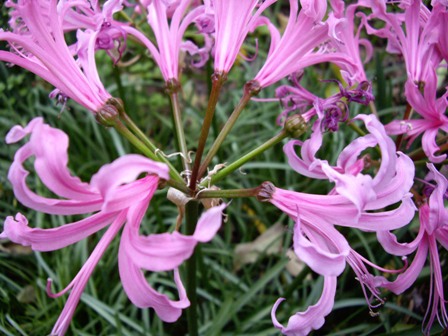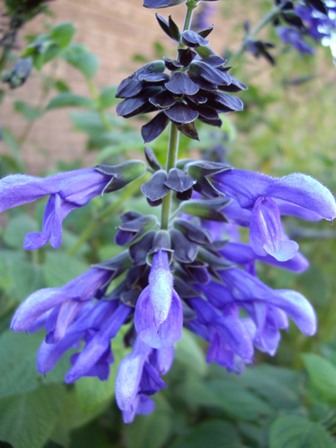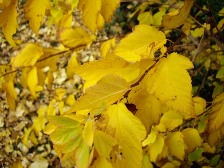The Autumn Garden
After enjoying the colour of a Canberra autumn, it’s time to do a little work around the garden, raking up fallen leaves from the lawn and either transferring them to garden beds as mulch, or placing them in a compost heap or bin. There will be plenty of trimming and cutting back at this time, to rejuvenate many of the plants which were at their best in summer but are now are looking a little tired.
In general terms, autumn is composting time, for there is so much garden waste which can be reused this way, so make the most of it all. Heaps can be aerated using a fork, or a corkscrew tool which is made especially for the purpose and makes the task easy. Layer the waste, and try not to add too much of any one component. Smaller, finer components decompose quicker and woody prunings are best put through a shredder before composting.

Acer Palmatum
NEW PLANTS FROM OLD
Semi-hardwood cuttings of Australian plants, shrubs and perennials can be taken at present, having been dipped in rooting hormone, or honey if you prefer, and potted in a mix of propagation sand and peat or perlite.
AUSTRALIAN PLANTS
While many of the Australian plants are coming into flower and merely need to be enjoyed at this time, you can remove dead flower heads from kangaroo paws back to ground level.
HERBACEOUS PERENNIALS
Many herbaceous perennials can be rejuvenated now by removing all old wood and dead flower stems, encouraging each plant to grow from a proliferation of new shoots which by now, should be appearing at the base. Old clumps can be divided, using outer sections of the clump which will have newer, more vigorous growth. Sections of the clump can be transplanted or potted up for friends or for plant stalls.

Nerine Bowden ii
SPRING BULBS
You can still plant Dutch Irises up until June, but most other spring flowering bulbs should be now planted and starting to show signs of growth. Day lilies can be lifted and divided. If liliums have become crowded, they can be lifted and divided, but should be replanted as soon as possible to prevent the bulbs from drying out. Continue to deadhead dahlias until the frosts finish off the plants. Tubers can then be lifted for storage in dry, dark conditions. Retain only healthy tubers with growth ‘eye’ and discard any damaged stock. Some growers store their tubers in sand or cheap potting mix for replanting in October/November.
PESTS
Look out for snails and slugs, and if growing bulbs in pots, be sure to check the lip of each pot, a favorite hiding place. If using traditional snail pellets, be sure to follow the instructions and spread them very thinly to avoid poisoning animals. Iron based products are now available and though a little more expensive, are worth the extra if you have pets. Beer traps can be effective, or you could try barriers such as a sprinkled trail of sawdust or copper strip. Adhesive copper strip can be applied to pots to prevent snail damage to treasured plants. It’s not too late to see an outbreak of aphids so squash any small gatherings with your fingers. If the problem is too big for that, spray with Pest Oil, Eco-Pest Oil or pyrethrum. Confidor will give systemic protection.

Salvia Black and Blue
GARDEN NEED A LIFT?
Look for punnets of seedlings such as polyanthus, primula, poppies, violas and pansies. Use fresh compost or premium potting mix if they are to be grown in tubs. Look for wallflowers (cheiranthus) and some of the newer introductions in perennial wallflowers are particularly attractive with long flowering periods: ‘Bowles mauve’, ‘Apricot Twist’ and of course the old favorite, ‘Winter Joy’ are all worth growing. There is also a pretty lemon-yellow option but see what you can find, for sometimes you will see wallflowers in shades of dark red, and mixed autumn tones, whether bright orange, tan or buff, and all look very cheery for the cooler months.
VEGE GARDEN
Very few veges can be planted now except for seedlings of the onion family, perhaps broad beans and if you are quick, peas. You can also prepare beds for planting perennials such as rhubarb, shallots and asparagus by digging in mature compost, some complete plant food and a handful of dolomite. Let the bed rest for a couple of weeks and then plant.
THE FLOWER GARDEN
Pelargoniums will probably be needing to be trimmed to a compact shape, for at this time of the year, they tend to look leggy unless continual tip pruning has been carried out.

Physocarpus “Darts Gold”
CAMELLIAS
Are budding up nicely at this time and will need to be kept moist to help them along. To improve the quality and size of large camellia flowers, remove some of the excess buds where they are cluttered or in pairs. With smaller flowered plants such as c. sasanqua, no disbudding is necessary. Summer flowering shrubs should be pruned and if they are wrongly sited and not too large, they can be shifted while the soil is still warm and weather conditions are cooler and hopefully damp, to help them settle in. Tough evergreen hedges can also be given a trim at this time.
ROSES
The rose catalogues are out and every website has a great range of roses to tempt you, including some great new cultivars, so order your roses now. (Hopefully you will have taken note of the good performers at the November and March shows and talked to exhibitors about their characteristics before making your choices.)Don’t get out the secateurs just yet for existing roses, just get them cleaned and sharpened! Wait till late July or early August before you prune roses and as for the spring flowering heritage roses, leave them until after they have flowered.
CITRUS
During the first few years in your garden, your young citrus trees should be protected with a cover, either frost protection cloth, hessian or shadecloth, to protect them from the ravages of frost, removing it each day. If the plant is in a pot, it might be possible to move it to a warmer sheltered position until spring. Do not fertilise or prune until spring, for the resulting new growth can easily be cut back by frosts if fertilizing is done.
STONE FRUIT
Its time to prune all stone fruit trees and once the leaves have fallen, spray with lime sulphur or a suitable copper spray.






